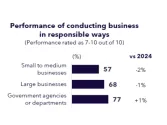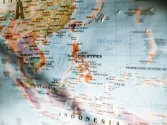
Michinori Sato joins an elite panel of judges at the Asian Telecom Awards
Telecommunications carriers need to deeply understand their customers and adapt appropriate infrastructure and tools, says the Deloitte TM&E leader.
As the leader of Deloitte's Asia Pacific Telecom, Media, and Entertainment(TM&E) Sector, TM&E consulting practice, and 5G specialist team in Japan, Michinori Sato has deep expertise in the telecommunications business, including new business development (B2C/B2B), B2B sales and marketing, branding of services, customer experience, DX strategy, finance operation, HR system, and talent and corporate organisational design.
He also served recently as a board member of Deloitte’s subsidiary company in cloud engineering.
Michinori has 20+ years of consulting experience to support major telecom, media, and electronics clients in the Strategy & Operation, Technology, and Human Capital areas. Before joining Deloitte, he worked for other consulting firms in the technology, media, and telecom (TMT) space.
As one of the judges at the Asian Telecom Awards, Asian Business Review spoke with Michinori as he shares his insights on the trends in the telecom space and how companies can position themselves amidst digital adoption to create their competitive edge.
With the digital adoption taking place, how can the telecommunications sector stay relevant to attract new customers and maintain current ones?
As our lives and businesses become increasingly digital, users are gradually demanding that all digital experiences be “natural” to them. A “natural” state means that you are unconsciously comfortable and feeling less stress or burden compared to when you are experiencing real activities and feelings.
To achieve this, a telecommunications carrier needs to: (1) deeply understand its customers; (2) win and maintain the position of the primary digital touchpoint for its customers; and (3) instill a common infrastructure and tools for engaging their digital lives in its ecosystem. Thanks to the evolution of digital technology, the level of implementation of each of these in advanced players have evolved significantly over the last few years. Carriers are constantly aware of best practices, including those in other industries, as they strive to create their competitive edge.
(1) Whilst there has been a significant increase in the types and volumes of data that can be used to learn more about customers, there has also been an evolution in analytics and AI technologies to analyse and suggest insights on customers. The perspective of the analysis has expanded over time, from customer attributes to customer behaviour, from customer segments to individual users, from past performance to future projections, and from communications revenue to online service revenue. As it becomes easier for users to switch between carriers, the meaning of their lifetime value has become more important as well. The key is what implications you get from analysing their data. It is still important to lower the churn rate and identify good customers, but more important is to find out what people find comfort in and what conditions feel “natural” to them. It is this information that offers the ideas that will lead to the next business plan and engagement.
(2) Next, it is important to continue to improve UX/UI to win and maintain digital customer touchpoints in daily life and business experiences. This applies to mobile device screens for consumers, and also to various networked devices in the business environment. It is necessary to design user touchpoints and optimise network performance based on, again, how users can make digital communication feel natural and comfortable. On top of that, because users in many countries tend to spend a lot of time on OTT services, it is also important to keep the strategic distance from OTT players to optimise your customers’ user experience and differentiate yourself from others. There are many strategic discussion points here, such as the design on the screen, the connectivity of service contracts, the depth of collaboration as an ecosystem, and the deployment of 5G, advanced networks, and cloud environments.
(3) For a telecommunications carrier, building a digital ecosystem around itself (or one where it is one of the core players) and engaging its users is a very important point. How it positions the financial and payment functions will have a significant impact on its future customer retention and acquisition in any country, even as the positions of telecommunications companies, OTT players, and popular digital ecosystems differ from country to country. A carrier with financial and payment capabilities will obtain overwhelmingly more information about its users, and with effective digital ecosystem design, receive payments from users for their digital lives. The form of digital finance is still evolving, but this is an important area where a carrier needs a strategic direction.
What are the challenges in catching up with the technology shift to digital?
For telecommunications carriers to shift to digital technologies, there are major challenges in terms of corporate culture and human resources. A typical example is customer-driven business generation. Certain departments have become more customer-oriented after many years of marketing and CRM activities, but providing services to users is a company-wide effort, encompassing the network infrastructure, sales, customer service, and several online business units. The difference in the degree of customer orientation and the walls between departments often have a negative effect on users. Moreover, the culture of many carriers is somewhat conservative because they are responsible for important social infrastructure, and whilst digital businesses do require Agile business development, taking the agile approach in software development alone may not result in the company’s internal gears meshing smoothly. These cultural challenges are difficult to solve with a single measure, but things can change when strategic change-management initiatives and continuous strong leadership at the top are combined.
As telecommunications carriers today must collaborate with companies in other industries, including OTT players, and internal business operations increasingly become digitalised, they cannot get away with not strengthening the digital capabilities of their employees. It is however difficult to address this challenge only through in-house recruitment and training. A more effective approach will be for telecommunications carriers to grasp this challenge from a broad perspective and effectively implement measures together with society, other companies and cooperative partners.
In the telecom sector, what trends are expected this year as the pandemic continues to affect consumer behaviour?
We will see the impact of the pandemic on some consumer behaviours this year. Workstyle, healthcare, and the evolution of virtual space are typical examples.
As was the case until last year, teleworking from home is taking root at a certain rate, and the importance of real communication will be reconsidered. This trend could result in a demand for an improved network environment, including backhaul lines that contribute to making the traditional telework environment more comfortable and an enhancement across the overall IT infrastructure that supports virtual work environment, and may accelerate the trend of people moving out of congested big cities to regional cities to work. The need for maintenance of both core networks and access networks could increase, and some countries may even require carriers to revise their 5G base station implementation plans.
Touchless monitoring and remote care in the healthcare sector are expected to evolve. It will be a year of new business opportunities for carriers to think more seriously about where and how they want to participate in this huge healthcare market. The presence of the virtual space including games will also expand. Virtual space is one of the areas where development has accelerated due to the pandemic. As XR is seen as a strong use case in the early stages of 5G, what parts of the ecosystem that comprises the virtual space will the telecommunications carriers occupy? There is a wide range of strategic options, from infrastructure that supports high-speed communications to metaverse platforms to content design to business operations within the virtual space, but the competition amongst operators will also accelerate.
Most investors are focusing on funding mobile apps or fintech startups. How can media and entertainment startups or small enterprises attract more venture capital?
In light of recent trends in the business environment, one of the most promising options is to develop businesses that incorporate elements related to user experience, living and business spaces and the construction of economic infrastructure in virtual space, such as metaverse/XR, NFT and gamification. As the presence of Digital Twin/Virtual Space expands in our lives, entertainment unique to the digital world has already emerged. For example, social tipping is getting more popular amongst people on SNS live performance, professional sports teams are adopting NFT for fan engagement, and so on. Venture Capital will therefore be interested in ideas and technologies that not only bring the real world into the digital space but also create new media and entertainment.
In your career, what experiences or people impacted your professional growth the most?
My experience as a leader in the field, driving the management reform of a global technology company, greatly enhanced my professional experience. The project, covering 5 regions around the world, was a large management reform consisting of more than 10 sub-projects including sales, marketing, supply chain, new business strategy, IT systems and change management, and I led the project from start to finish for 5 years. As I travelled around the world implementing the reform plans, I gained a deep understanding of the fact that management was ultimately carried out by each individual, and I learned the importance of enhancing both the logical elements, such as management vision and business strategy and the emotional elements that drove people in every country.
As an industry expert, what skills would you recommend to upcoming professionals who want to follow the same career path as you?
It is important to have an objective view of the industry you are in. For example, to deepen your understanding of the telecommunications industry, look at it from the perspective of other industries or the perspective of neighbouring industries. If you're looking to be an industry expert, it also helps to have the skill to regularly “backcast from the future” in the industry. Backcasting is a skill to reassess the current position from various environmental analyses of the telecommunications industry in 2030. Another important thing is to deepen your network in the industry. Actively expanding the range of your communication will also help you build your career as an industry professional.
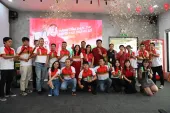









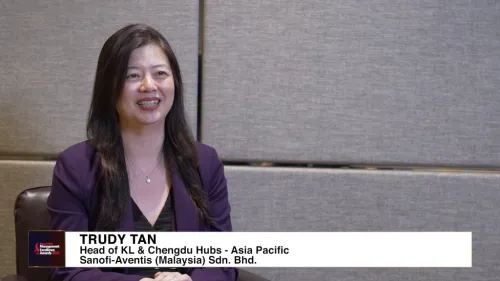
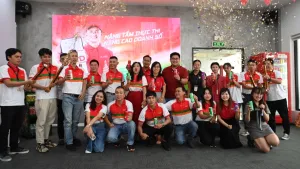
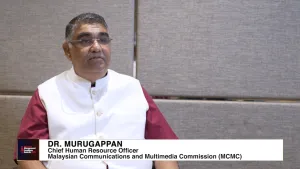

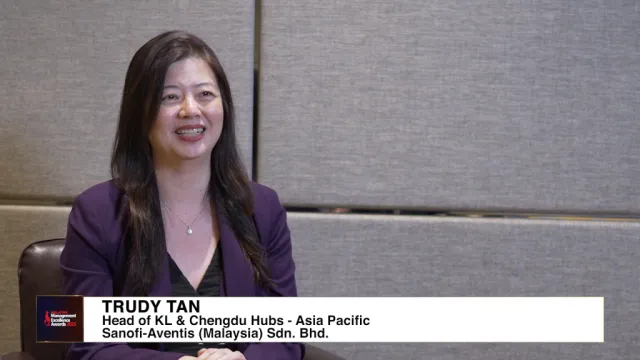

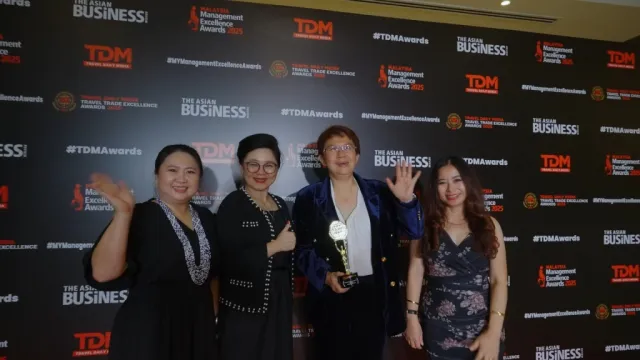


 Advertise
Advertise

